- Home
- Antonia Fraser
Royal Charles: Charles II and the Restoration Page 15
Royal Charles: Charles II and the Restoration Read online
Page 15
For once it was Henrietta Maria who behaved with common sense and judgement, when Charles consulted her on the subject. There was nothing ‘new and extraordinary’ in the notion that such a well-born young lady as the daughter of Argyll should wed a King, tactfully wrote back this descendant of the great Henri Quatre. But was it wise to exclude the English altogether from consultation over the question of his marriage? In general, the ‘imprudence or rather the madness’ of Charles’ taking of the Covenant had galvanized the widowed Queen. She warned courtiers who were not Catholics away from her side, saying that she was doing so in order to counterbalance her son’s behaviour. Reasonably enough, she did not wish to forfeit all the Catholic support in Europe. The Argyll marriage project lapsed for lack of encouragement.14
Back in Scotland, the real problem of the time was not the character of the monarch, who was indeed proving himself right royally, nor at this moment even the character of the opposition. Cromwell, a man of over fifty, in precarious health, had taken the winter in Edinburgh badly: he was struck down again in the spring so severely that he saluted the (English) doctor who cured him with the words, ‘He has plucked me out of the grave!’ The problem was that, for all these progresses, for all this parade of unity, marked by the Scots Parliament appointing the King as commander in March, the people themselves simply did not join up in sufficient numbers to constitute a proper resurgent military force.
For at least a generation the Scottish national fabric had been torn and torn again by religious division. Such rents were not so easily mended. For thirteen years, more or less, the country had been at war, its terrain frequently fought over. The deep human instinct to live at peace, if peace was at all possible, was a much stronger impulse than the shallow new growth of national loyalty implanted by their young King.
Unfortunately there was no way of discovering this unpalatable truth except by trial and failure. In the early summer of 1651 King Charles still rode high. Argyll’s influence diminished, his own authority increased. Charles’ twenty-first birthday, 29 May 1651, was declared in the Scottish Parliament the day of ‘the King’s Majestic Majority’; that evening Fife at least was lit up with congratulatory bonfires, and the ordnance was heard blasting off from Burntisland and other Royalist garrisons. The English heard that Charles was ‘very absolute’ in following ‘his own private counsels’. On 24 June the Weekly Intelligence (a Commonwealth gazette) reported that he was ‘higher than his people as much in stature as authority’. And Charles’ enormous physical energy was coming into its own. He thought nothing of riding, two or three times a week, between Stirling and Perth in order to display himself alternately at the head of his forces, and in Parliament. He rode up and down the lines of the army, wearing ‘a soldier’s dress’ of buff, set off by a red sash and his precious George. As to his own commitment, he told them genially that he had only one life to lose.15
The question was rapidly arising: where and in what direction was this life, and indeed this army, to be deployed? The obvious decision was to march on England. Given that, the possibilities were twofold. Charles could either plan for England immediately or he could wend his way north, and join up firmly with the Highlanders and Royalists there. Having united all available Scottish forces, he could consider further southward action. Both these courses begged the question of the Cromwellian army still in Scotland, centred on Edinburgh and straddled about the south-east and south-west of the country. The Scots, as everyone realized at heart, were in no position to take on the English again after the defeat at Dunbar. Indeed, both courses open to the King presupposed the swelling of their forces by a large number of additional troops – without which they could scarcely hope to suffer anything but a new and even more humiliating version of the Dunbar catastrophe.
It is important to realize that any plan for a direct southward move was based on the illusion of English Royalist help, because this goes far to explain the ultimate failure of the disastrous Worcester expedition. The notion of English Royalist help was an illusion for the grim reason that by 1651 the English Royalist movement was in itself a myth.16 Yet of this the King’s intelligence, such as it was, was quite unaware. Communications had been cut for too long. It was impossible for the King’s advisers, or indeed Charles himself, to appreciate the totality of the hold which a vigilant government now held over England itself. In many ways the country had become like a modern police state, with passes and permissions needed for any form of movement.
The activists fled, their estates confiscated. The feeble (and those disgusted by the King’s taking of the Covenant) compounded. The only Royalists with any sort of liberty were those who had decided to sit out the times until better ones prevailed. These were scarcely the types to risk life and limb to join an invading Scottish army, as it would once again appear to be.
Of Royalist underground conspiracy, about the only movement with any vitality in it was the so-called Western Association; this had been formed, under the cover of a race-meeting in April 1650, by Colonel Francis Wyndham of Somerset and Sir John Paulet of Hampshire. The sphere of its activities was remote from the vital north-western territories through which a Scottish army must pass to recruit English troops. The northwest was the traditional area of Royalist support, where many of the great magnates, such as the powerful Earl of Derby, had favoured the King. Yet the Northern Association, the alleged sister movement to that of the West Country, has been shown to be non-existent except on paper. An unsuccessful and easily quelled rising in Norfolk in December 1650 further depressed the Royalist spirits.
Back in Scotland however, Dean King reported that the King’s power was absolute: ‘all factions composed, the ambitious defeated, the army cheerful, accomplished, numerous’.17 In June too, most hopeful sign of all, the pernicious Act of Classes was repealed. From the Scottish angle all the prognostications were cheerful. As far as can be made out, it was always the intention of the King to put this mood of optimism to good use and march on England. Strategically, it made as much sense as marching north; besides, there was always the uncertainty as to how long any alliance of former Malignants and present Covenanters would last. Then there was Charles’ undoubted dislike of the Scots, not diminished by the fact that he had successfully united them under his personal banner. To put it mildly, he had no personal inducement to linger in a country which had treated him so ill.
Nevertheless, the Scots themselves were much less certain of the right course to take. At this point, an unexpected upsurge of the Commonwealth fortunes in Scotland transformed the situation. Hitherto the monarchical party had rested, militarily speaking, on the secure base of the Fife peninsula; apparently impregnable to Commonwealth assault, it enabled them to scurry about the north-east with more or less impunity. But on 24 June, at Inverkeithing just north of Edinburgh (close by the site of the modern Forth Bridge), the brilliant young Parliamentary commander John Lambert presented Cromwell with just the victory he needed. It is possible that David Leslie can also be blamed for not sending in enough troops in support. In any case, the bloodshed at Inverkeithing was even more lethal than that at Dunbar: the proportion of Scots killed in relation to the total force was greater.
The Fife débâcle removed from the Scots their other option of a northward encirclement. In a clever manœuvre Cromwell, now restored to health, reached Perth and cut off the Scots’ supplies. Militarily speaking, Charles had probably been right from the first in desiring the southern expedition. Now he was certainly right in desiring to speed up the operation if it was to take place at all.
Still the Scots havered. Their army lurked uncertainly west of Fife, near Stirling, leaving the initiative to Cromwell. The Scots did not finally take the decision to plunge south, regardless, for several vital weeks. The actual march began as late as 31 July. The Duke of Hamilton (formerly Earl of Lanark, who had succeeded his brother, executed by Parliament) agreed that marching on England was probably the best course. Or at any rate he called it ‘the least ill’. But h
e added, ‘It appears very desperate to me.’ Now the fatal divisions, the doom of Scottish society for so many years, began to appear in their ranks once again. Argyll, for example, retreated morosely from the scene and refused to join the army. At this the Engager Hamilton was full of glee: ‘All the rogues have left us.’18 But by the time Charles reached England he would need all the rogues he could get.
It was thus a listless and troubled force which crossed the border into England on 5 August.fn1 Such energy as it had was unfortunately diverted into such idiotic channels as the dispute initiated, with typically bad timing, by Buckingham. The perky young Duke suddenly took it upon himself to object to command of the army being given to a Scot, although the King had the veteran Leslie at his side, as well as Middleton. When Charles tactfully referred to Buckingham’s youth as a reason for denying him (Buckingham was actually two years older than Charles), the Duke sulked in the most childish and public manner, refusing to speak to Charles, refusing to come to the Council, and – supreme buffoon’s touch – refusing to change his linen in protest.
These debilitations contrasted with the energy with which the Commonwealth acted to meet the Scottish menace. Once again, as in 1648, much care was taken to present the invaders as alien and predatory. Mercurius Britannicus was coached to make a display of anti-Scottish feeling; an issue of early August chose to recall to its readers every single Scottish invasion of England which had taken place since that of King Malcolm in 1071. The word ‘un-English’ was used to describe those who might be so unwary as to join the ‘King of Scots’; stoning was suggested as a suitable fate for them.19
This so-called King of Scots was in fact proclaimed King of England at Penrith, a northern market town, and later at Rokeby, where a flourish of trumpets attended the ceremony. But it was significant that the important border town of Carlisle had refused to surrender to his call. And as their native country receded, all too many of the Scots decided to recede from the army back to it. Practically no-one in England joined the royal standard to replace them.
Government measures in England, including the cancellation of all public meetings, dealt efficiently with the emergency. Meanwhile, Cromwell, Lambert and Harrison, three of the toughest Parliamentary generals, were busy harrying the Scottish army in the rear: ‘That mongrel Scotch Army’, as Thomas Lord Bruce (a Royalist) disdainfully called it in his memoirs.20 But it was not actually mongrel enough. The Catholics of Lancashire existed but they did not rise. The King was after all at the head of a band of Presbyterians.
Nothing seemed to go right. When the Earl of Derby, the great magnate of Lancashire, landed from the Isle of Man to bring his followers to the King’s aid, he was instantly defeated at Wigan. Only the Earl himself, and a handful of his men, escaped to join the King further south. The presence of Commonwealth spies in the Royalist organization exacerbated its problems: Isaac Berkenhead, a supposed Royalist agent, betrayed the correspondence between the King and Lord Derby. Another spy, Thomas Coke, revealed so much of the Royalist network in England that about two thousand people were taken into custody, including potential leaders such as the Duke of Richmond and Lord Beauchamp.21
The King’s fortunes got no better as he moved south. If anything, the patriotic revulsion of the English against the Scots increased. The Parliamentary commander of the town of Shrewsbury refused to surrender to ‘the King’, and addressed his refusal pointedly to the ‘Commander-in-Chief of the Scottish Army’. There are many instances in contemporary records and memoirs of once loyal monarchists who simply stayed away from the doomed and by now straggling royal train as it wound its way through that English countryside. At Chirk Castle Sir Thomas Middleton not only declined to rouse North Wales on behalf of the King, but even refused to receive his letter.
The Duke of Hamilton had written, ‘I confess I cannot tell you whether our hopes or fears are greatest, but we have one stout argument – despair; for we must either stoutly fight or die.’ It was in this mood that King Charles, at the head of no more than sixteen thousand men, most of whom were by now utterly exhausted, arrived on August 22 at the city of Worcester.
Twelve days passed before the Commonwealth Army attacked. This period was spent by the King in desperate activity, trying to salvage something like victory from a hopeless situation.
Proud of its loyalty to the royal house, Worcester had been the first city to declare for Charles I in the Civil War. Graced by an incomparable cathedral, which loomed over the woody bank of the River Severn, it presented a fair sight, this city set in a flat green countryside of fertility, nearing the Marches of England and Wales. Here the King lodged in a small mediaeval housefn2 and gave his mind to the reanimation of his dispirited men. It had been twenty-three days since they departed from Scotland. Their problems were not purely of the mind: they were exhausted by this seemingly endless yet unsuccessful progress through England, and their belongings were in tatters; most of them lacked shoes and stockings altogether.
The city did have one advantage to set against all this; it occupied a naturally defensive position, situated on one river, the Severn, as it flowed down to Bristol, and defended by another, the Teme, which flowed into the Severn at a strategic point slightly south-east of the town. Beyond the river palisade were the heights blocking off Worcester from Evesham and, to the west, the Malvern Hills. This combination of river and hill might be turned to profit at the eleventh hour.
The day after his arrival the King held an assembly in the broad water-meadows below the cathedral. But the manifesto he issued showed that his prolonged march had still given him no opportunity to feel the pulse of English opinion; he was quite out of touch. For instance, he offered to settle religion according to the Covenant; he thought the difficulties of this were covered by promising arrears of pay to anyone who would desert the Commonwealth. The Act of Oblivion he offered to anyone except the actual regicides must also have seemed curiously unreal to those gathered in the water-meadows; they would have formed the perfectly correct conclusion that it was the King and the Scots who were going to need an Act of Oblivion before they were much older. At least Charles stressed the fact that the Scots would be returning to their own country once the matter at hand was concluded: government propaganda had underlined the fear that the Scots would be granted good English land.
But when the King tried to order a levy of all persons between sixteen and sixty, he was preaching to the wind. Soon Cromwell himself would be ranged against him with thirty thousand seasoned men. The government had even successfully ordered out the English militia against England’s titular King. Any stray soldiers were far more inclined to join up with the winning side of the Commonwealth than with that of the beleaguered King.
Cromwell, supported by Lambert, Harrison and Fleetwood, had arrived from the north. But, with his usual strategic flair, he decided to cut off Worcester from the south and south-east in order to obviate the risk of the King reaching London. The royal party inside Worcester were like settlers within a defensive circle of their upturned wagons; they soon found themselves ringed by the Indians. In the absence of any possibility of rescue – no military here galloping up in the nick of time – the King hoped to break out of the ring. He was certainly very much in control of the campaign. Indeed, in this final throw (the first and last military command in the field he would ever hold), he showed both courage and ability. It was at Charles’ orders that the four vital bridges guarding access to the town were blown up; it was not his fault that the order was inadequately carried out, so that one bridge, at Upton, survived in sufficiently good condition to be patched up and used by Lambert.
Otherwise, the King concentrated the bulk of his soldiers within the walled city, where he trusted to the narrow streets to provide a natural form of defensive fortification. But he did position three Scottish regiments under Thomas Dalyell, Sir William Keith and Major General Pitscottie to guard the vital confluence of the Severn and the Teme in the fields below the city to the west. Cromwell was in
position from 29 August onwards, with the Cromwellian guns battering away at the town from the east; a bold night foray by Middleton failed to silence these guns.
The final Indian charge could not be long delayed; indeed, there are grounds for believing that Cromwell actually delayed the assault to coincide with his ‘most auspicious day’ – 3 September, the first anniversary of his victory at Dunbar.22 When the first noise of firing was heard, the King climbed up the fine fourteenth-century square tower of Worcester Cathedral. This watchpost surveyed (and still surveys) an imposing panorama of water and wood, as the two rivers were spread out beneath his gaze.
It was an historic position. In this cathedral had been buried another unfortunate English monarch, John, and an unlucky prince, Arthur, he whose premature death after marriage to Catharine of Aragon had brought about the marital conflicts of Henry VIII. Just as in its own past Worcester had seen many battles, with Saxons, Danes and Normans jostling in its legends, so the cathedral too had its scars. The beautiful stained glass which had survived the Reformation had not survived the depredations of the Parliamentary troops after the Siege of Worcester in 1646, when cathedral and city were pillaged. The arrival of King Charles II incidentally provided a welcome doctrinal interruption in the Puritan services which had taken place there ever since.
The King was armed with a spy-glass and dressed in his now familiar uniform of a buff coat, and boots, with a red sash and the George round his neck. Below him he could see into the College Green, surrounded by mediaeval houses, and packed with horses, carts and men. Beyond that could be glimpsed others of his troops, and their colourful standards: in his own mind, at least, they were prepared to defend the city or die in the attempt. Beyond that again lay the marshes outside the city.

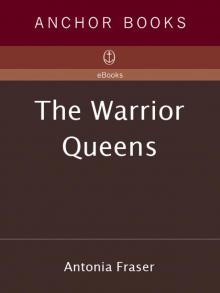 Warrior Queens
Warrior Queens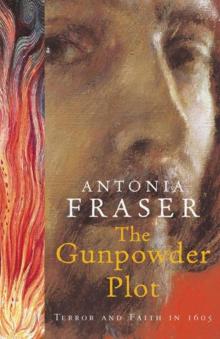 The Gunpowder Plot
The Gunpowder Plot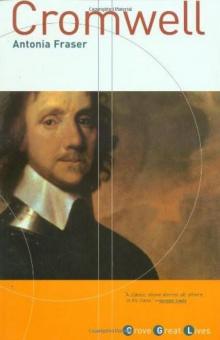 Cromwell
Cromwell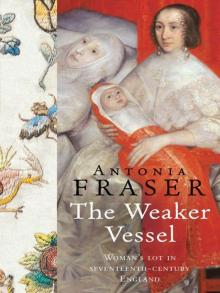 The Weaker Vessel: Women's Lot in Seventeenth-Century England
The Weaker Vessel: Women's Lot in Seventeenth-Century England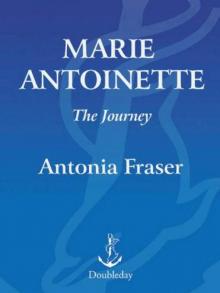 Marie Antoinette: The Journey
Marie Antoinette: The Journey Oxford Blood
Oxford Blood Your Royal Hostage
Your Royal Hostage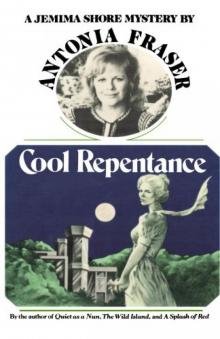 Cool Repentance
Cool Repentance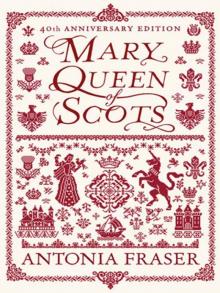 Mary Queen of Scots
Mary Queen of Scots Political Death
Political Death Royal Charles: Charles II and the Restoration
Royal Charles: Charles II and the Restoration My History: A Memoir of Growing Up
My History: A Memoir of Growing Up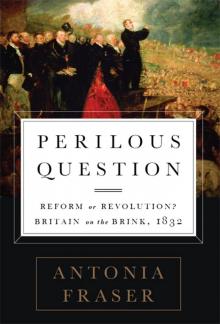 Perilous Question: Reform or Revolution? Britain on the Brink, 1832
Perilous Question: Reform or Revolution? Britain on the Brink, 1832 Jemima Shore at the Sunny Grave
Jemima Shore at the Sunny Grave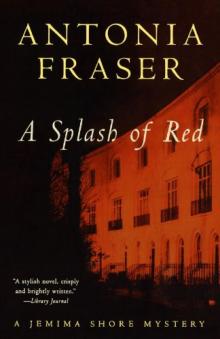 A Splash of Red
A Splash of Red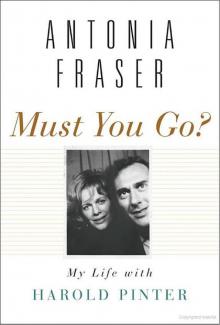 Must You Go?: My Life With Harold Pinter
Must You Go?: My Life With Harold Pinter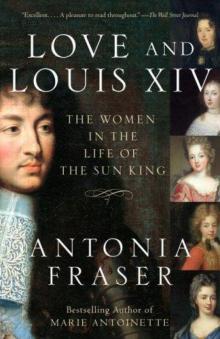 Love and Louis XIV: The Women in the Life of the Sun King
Love and Louis XIV: The Women in the Life of the Sun King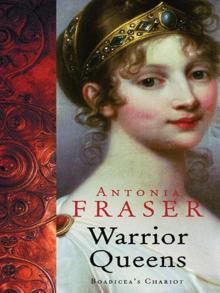 The Warrior Queens
The Warrior Queens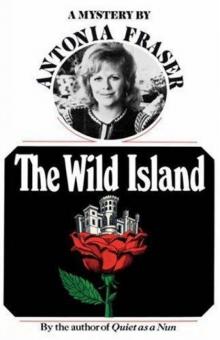 The Wild Island
The Wild Island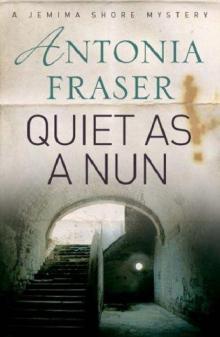 Quiet as a Nun
Quiet as a Nun Perilous Question
Perilous Question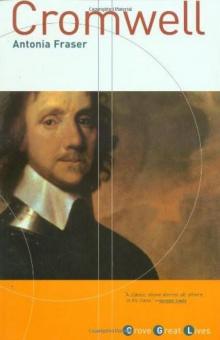 Cromwell, the Lord Protector
Cromwell, the Lord Protector Gunpowder Plots
Gunpowder Plots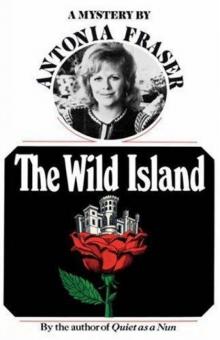 The Wild Island - Jemima Shore 02
The Wild Island - Jemima Shore 02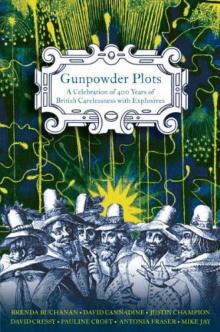 Gunpowder Plots: A Celebration of 400 Years of Bonfire Night
Gunpowder Plots: A Celebration of 400 Years of Bonfire Night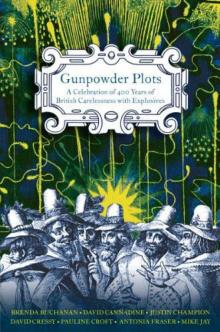 Gunpowder Plots_A Celebration of 400 Years of Bonfire Night
Gunpowder Plots_A Celebration of 400 Years of Bonfire Night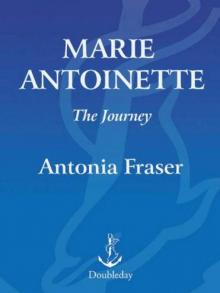 Marie Antoinette
Marie Antoinette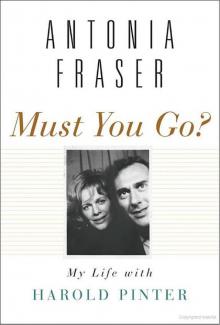 Must You Go?
Must You Go? My History
My History